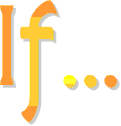Second and Third Conditional
Diposting oleh
NANDA ALISHA ASAD
on Rabu, 05 Desember 2012
2nd Conditional Sentences
2nd conditional (also called conditional type 2) is a structure used for talking about unreal situations in the present or in the future. This page will explain how the second conditional is formed, and when to use it. (Contrary-fact)
Like a first conditional, a second conditional sentence consists of two clauses, an “if” clause and a main clause:
Main clause: If I had a million dollars,
If Clause: I would buy a big house.
If the “if” clause comes first, a comma is usually used. If the “if” clause comes second, there is no need for a comma:
If clause: I would buy a big house,
Main clause: if I had a million dollars.
Formula :
If clause If + simple past (V2) Result clause would + V1
3rd Conditional Sentences
3rd conditional sentences is an “impossible condition” , meaning it is contrary to the fact in the past and there is no hope for the situation to occur because you were imagining something in the past.
Like the other conditionals, a third conditional sentence consists of two clauses, an “if” clause and a main clause:
If clause: if + subject + past perfect verb
Main clause: subject + would (OR could, OR might) have + past participle
The third conditional is used to talk about things which did not happen in the past. If your native language does not have a similar construction, you may find this a little strange, but it can be very useful.











0 komentar:
Posting Komentar